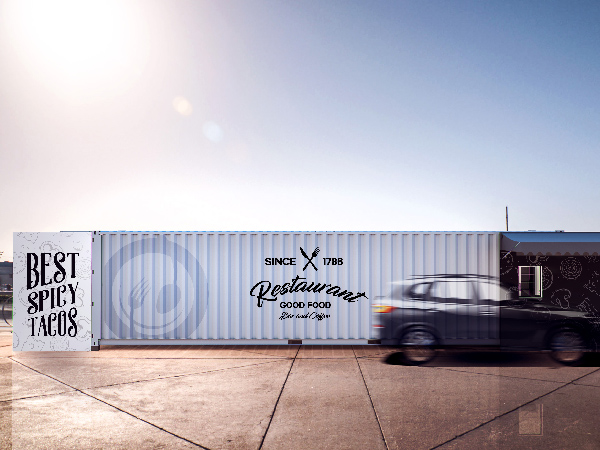Container Kitchens: The New Footprint
by David Klemt

Would it be a surprise to anyone after the past twelve months that shipping containers may be the new commercial kitchens?
According to two 2021 Restaurants Canada Show panelists, custom containers are the future.
A partnership between a builder and designer is providing restaurateurs with an intriguing solution.
Meet the Problem Solvers
Jonathan Auger is the president of Juiceworks Exhibits. The company operates out of Mississauga, Ontario, Canada.
Juiceworks designs, engineers, and fabricates memorable exhibits and installations. Click here to view projects for clients such as Genesis, Infiniti and Volvo.
Nicholas Goddard is the founder of Portage Design Group, located in Toronto.
Portage specializes in interior design and offers a full suite of services, including research, sophisticated design, and construction management. The company’s restaurant design work can be seen here.
Together with a small but skilled team, Auger and Goddard have formed Make My Ghost Kitchen.
Custom Container Flexibility
In some cases, a smaller restaurant footprint is attractive to operators. This is due in part to guest behavior we’ve seen since 2020. That is, guests haven’t been able to or felt comfortable with dining indoors at restaurants.
Then, of course, there’s the cost factor. A smaller footprint, generally speaking, equals lower initial investment and rent. An operator with a new concept can use a container before investing in a brick-and-mortar location.
Other benefits relate to market testing; expansion; virtual and ghost kitchen operations; and delivery and pickup.
Operators looking to expand or add retail, along with QSRs, are showing interest in Make My Ghost Kitchen’s containers. One explanation for the interest is simple: containers are highly mobile.
An operator sends their kitted out container to a potential market. They open up shop and test the viability of their concept. If the reaction is less than desirable, they move the container to another market.
For example, one client set up a container complete with a delivery window. In just six hours they sold 3,600 burgers.
Custom Container Costs
Make My Ghost Kitchen’s custom containers come with the necessary equipment. They also feature a delivery window and fabricated with a small pickup vestibule.
Obviously, prices go up with the quality of equipment. Other customizations, it stands to reason, can also push container costs up.
On average, however, Auger says an eight-foot by 20-foot container can be had for as low as $20 per square foot. Prices can climb north of $50 to $75 per square foot, however.
Whether functioning as a ghost kitchen or marketing showpiece, operators can choose from ventilation solutions. The containers can vent to interior (which heats them up quickly) or exterior. Another cost to consider is water. If a municipality doesn’t grant access to their water it will need to be trucked in.
Finally, a custom-kitted kitchen can be an asset. If an operator decides it’s time to move on, they have the potential to sell their container.
Image: Make My Ghost Kitchen
